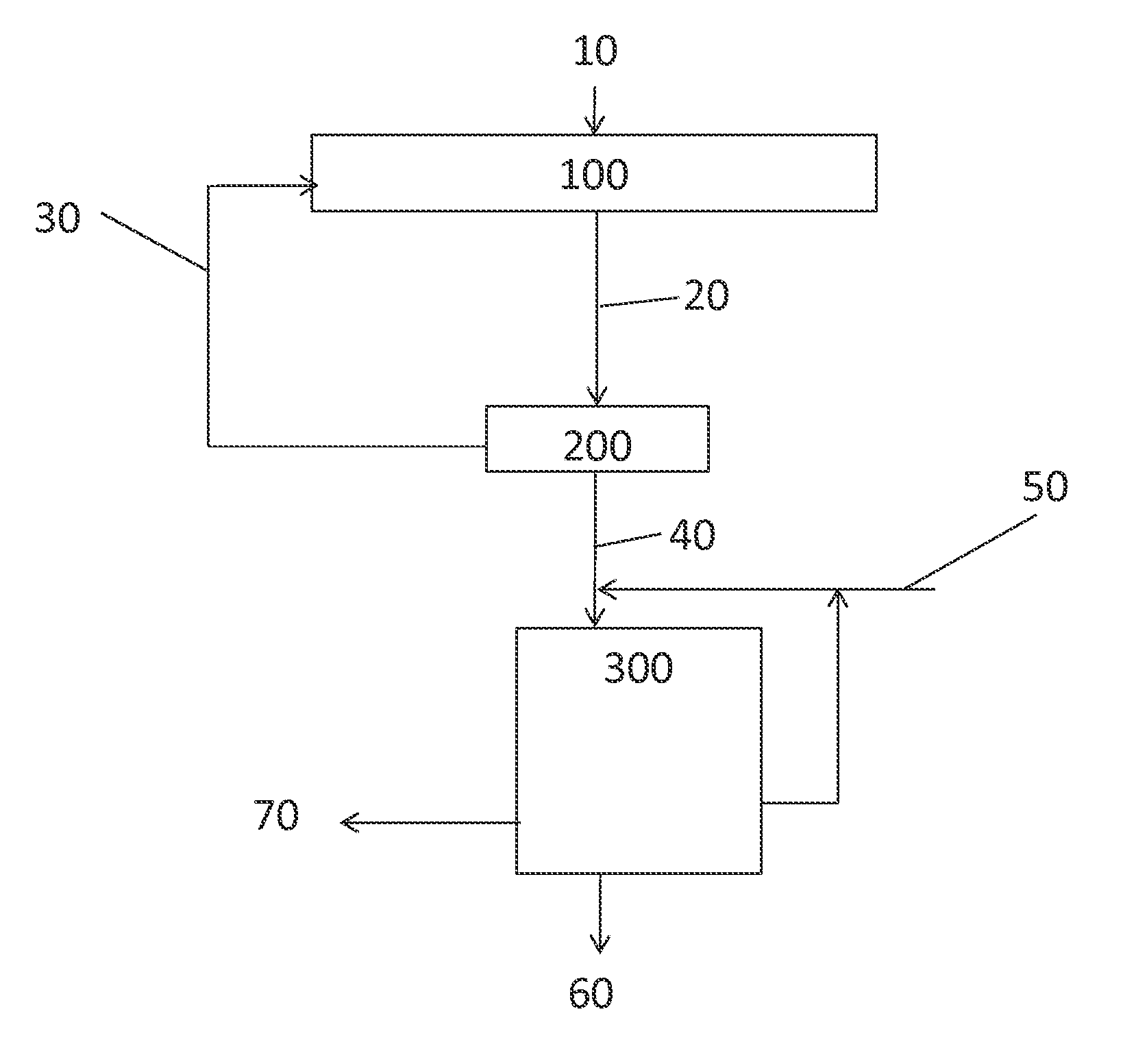Process for modifying bio-oil
a bio-oil and process technology, applied in the field of bio-oil modification, can solve the problems of high oxygen content, corrosion, and substantial water content, and achieve the effect of improving the stability of said bio-oil and modifying the composition
- Summary
- Abstract
- Description
- Claims
- Application Information
AI Technical Summary
Benefits of technology
Problems solved by technology
Method used
Image
Examples
example 1
[0057]Reduction of Pyrolysis Oil
[0058]The pyrolysis oil (50 g) was dissolved in methanol (75 ml) in the reaction vessel. NaBH4 was added slowly. During NaBH4 addition the reaction mixture was heated to about 60° C. After all NaBH4 was added reaction mixture was heated to reflux (65° C.) and reaction was continued for 5 h. Samples were taken right after all NaBH4 was added and once every hour to monitor the progress of the reaction. The reaction mixture was quenched with addition of 75 ml water. The solvents and NaBO4 were removed and modified bio-oil was recovered. GC-MS revealed e.g. butanol, coniferyl alcohol, propyl guacyl etc. TAN number (Total Acid Number) was reduced from 120 of starting material (pyrolysis oil) to 90 of product (modified pyrolysis oil).
PUM
| Property | Measurement | Unit |
|---|---|---|
| temperature | aaaaa | aaaaa |
| pressure | aaaaa | aaaaa |
| temperatures | aaaaa | aaaaa |
Abstract
Description
Claims
Application Information
 Login to View More
Login to View More - R&D
- Intellectual Property
- Life Sciences
- Materials
- Tech Scout
- Unparalleled Data Quality
- Higher Quality Content
- 60% Fewer Hallucinations
Browse by: Latest US Patents, China's latest patents, Technical Efficacy Thesaurus, Application Domain, Technology Topic, Popular Technical Reports.
© 2025 PatSnap. All rights reserved.Legal|Privacy policy|Modern Slavery Act Transparency Statement|Sitemap|About US| Contact US: help@patsnap.com



